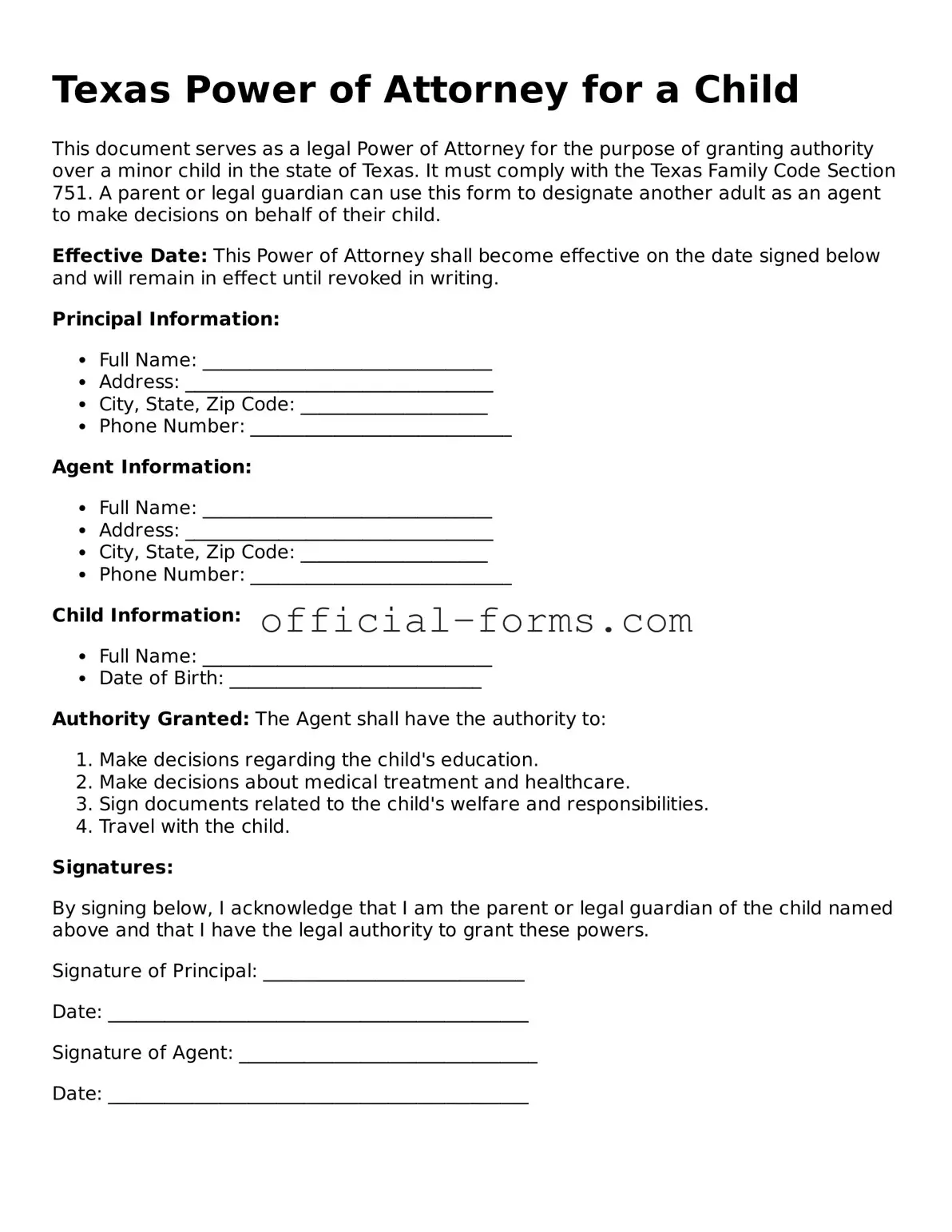When filling out the Texas Power of Attorney for a Child form, many individuals make common mistakes that can lead to complications down the line. One prevalent error is failing to specify the duration of the power of attorney. Without a clear start and end date, the document may remain in effect longer than intended, potentially causing issues with guardianship.
Another mistake is neglecting to include the full names and addresses of both the child and the agent. This information is crucial for identification purposes. Incomplete details can create confusion and may even lead to disputes about who has authority over the child.
Some individuals overlook the importance of having the document notarized. While it may not be a strict requirement in every situation, notarization adds an extra layer of legitimacy and can prevent challenges to the authority granted in the document.
Additionally, people often forget to discuss the arrangement with the child. If the child is old enough to understand, it's essential to explain what the power of attorney means. This conversation can help alleviate any anxiety the child may feel about the situation.
Another common oversight is not including specific powers granted to the agent. A vague description can lead to misunderstandings about what decisions the agent can make. Be clear and detailed about the authority being given, whether it’s related to medical decisions, educational matters, or other responsibilities.
Some individuals also fail to consider the possibility of revocation. It’s important to know that circumstances can change, and having a plan in place for revoking the power of attorney can prevent complications later. Make sure to include a statement about how and when the power of attorney can be revoked.
Finally, people sometimes forget to keep copies of the completed form. It’s essential to provide copies to the agent and any relevant parties, such as schools or medical providers. Without copies, the agent may face challenges in proving their authority when it’s needed.
